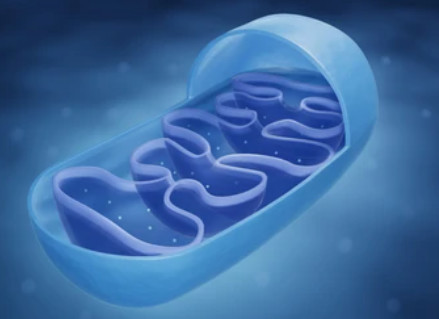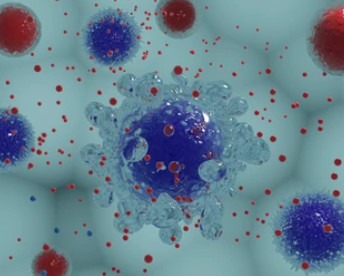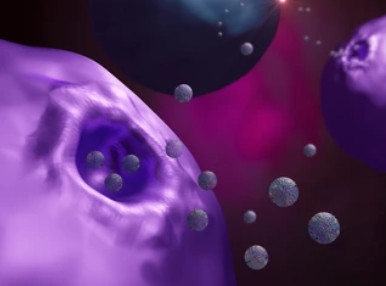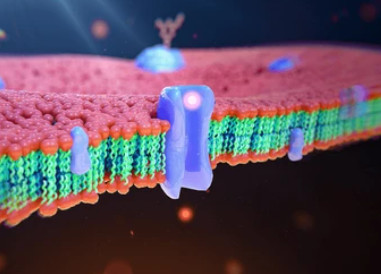Overcoming Challenges in Membrane Protein Research: New Strategies and Technologies
Online InquiryIn the realm of biological research, the study of membrane proteins has long been a formidable challenge due to their intricate nature and crucial role in various cellular processes. These proteins, embedded within the lipid bilayer, play pivotal roles in cellular communication, transport, and signaling. However, the very same lipid environment that grants them their functionality also presents significant obstacles to their isolation, purification, and structural characterization. Creative Proteomics, a leading authority in biological research, has been at the forefront of innovative technologies and methodologies to overcome these challenges, revolutionizing the field of membrane protein research.
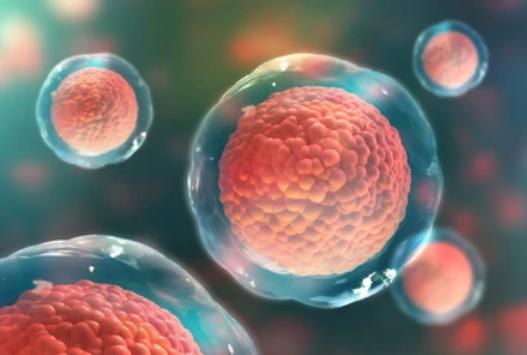
Challenges in Purification and Crystallization of Membrane Proteins
Lipid-Bilayer Environment: A Double-Edged Sword
Membrane proteins owe their functionality to the lipid-bilayer environment in which they reside. However, this very environment poses a challenge in their isolation and purification. The hydrophobic regions that interact with the lipid bilayer can result in protein aggregation or misfolding upon extraction. Conventional purification methods struggle to maintain the delicate balance between protein stability and solubility.
Elusive Structural Characterization
One of the paramount objectives in membrane protein research is to decipher their three-dimensional structures. Such knowledge not only enhances our understanding of their mechanisms but also aids in drug design and therapeutic development. Unfortunately, the crystallization of membrane proteins remains a major roadblock. Their inherently flexible nature and complex interplay with lipids often thwart crystallization attempts, leaving researchers with incomplete insights.
Innovative Technologies and Methods in Membrane Protein Purification and Crystallization
Lipid Nanosheet Technology: Redefining the Lipid Environment
Membrane proteins thrive in a lipid bilayer environment, which is critical for maintaining their structure and function. However, this very environment makes their extraction, purification, and stabilization a daunting task. Enter lipid nanosheet technology, a revolutionary approach. These nanosheets mimic the native lipid environment in a controlled and stable manner, offering several distinct advantages:
- Enhanced Solubilization: Lipid nanosheets provide a stable platform for solubilizing membrane proteins. By surrounding the proteins with lipid-like structures, nanosheets prevent aggregation and misfolding during extraction.
- Preservation of Native Conformation: One of the major hurdles in membrane protein research is maintaining the proteins' native conformation throughout the purification process. Lipid nanosheets effectively mimic the lipid bilayer, allowing membrane proteins to retain their natural structure and function, even in a detergent-free environment.
- Facilitated Purification: The use of lipid nanosheets simplifies the purification process. Researchers can leverage affinity tags or other specific interactions to isolate the membrane proteins of interest while minimizing contaminants.
- Structural Insights: Lipid nanosheets enable researchers to obtain high-resolution structural data using techniques like cryo-electron microscopy (cryo-EM) and X-ray crystallography. The stabilized lipid environment enhances the stability of proteins during imaging, resulting in more accurate structural information.
Stabilized Proteins: Taming Flexibility for Crystallization
Membrane proteins often exhibit inherent flexibility, which can impede crystallization attempts. Creative Proteomics has introduced ingenious strategies for stabilizing these proteins, making them more amenable to structural determination:
- Fusion Partners: By fusing the target membrane protein with a stable protein or domain, researchers can lock the protein into a conformation that is more conducive to crystallization. This technique provides a scaffold that restrains the flexibility of the protein, enhancing the likelihood of obtaining well-ordered crystals.
- Stabilizing Agents: Creative Proteomics has identified specific stabilizing agents that interact with membrane proteins to enhance their stability and promote crystallization. These agents can stabilize specific regions of the protein, reducing conformational variability and increasing the chances of successful crystallization.
- Conformational Selection: Through careful engineering, researchers can select specific conformational states of membrane proteins that are more likely to crystallize successfully. This approach involves designing mutations or modifications that favor stable conformations suitable for crystallography.
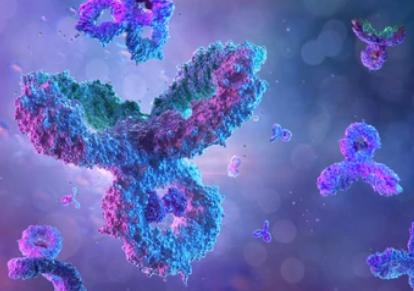
Applications: Transforming Research and Drug Development
These innovative technologies and methods have yielded remarkable outcomes in membrane protein research, revolutionizing our understanding of crucial protein families:
- GPCR Structural Insights: G Protein-Coupled Receptors (GPCRs), a challenging class of membrane proteins, have been successfully stabilized and crystallized using lipid nanosheet technology. These achievements have unveiled the dynamic mechanisms of ligand binding and activation, laying the groundwork for targeted drug design.
- Ion Channel Discoveries: The stabilization of ion channels through fusion partners and stabilizing agents has enabled the structural elucidation of previously inaccessible ion channel conformations. These insights have profound implications for drug development strategies targeting disorders related to ion channel dysregulation.
Challenges in the study of membrane proteins continue to hinder our ability to fully understand these important cellular components. The development of breakthrough technologies and methods such as lipid nanosheet technology and stabilized protein strategies has unlocked unprecedented possibilities in purifying, crystallizing and deciphering the structure of membrane proteins. It can help researchers further explore the complexities of cellular processes and drug development, and shape the future of biological research.
Creative Proteomics offer comprehensive membrane proteomics research services including membrane proteomics analysis, membrane lipidomic analysis, membrane Protein-molecule interaction analysis, membrane protein structure determination, among others. We play an important role in advancing membrane proteomics research.
Related Services
* For Research Use Only. Not for use in diagnostic procedures.



